178 posts
Latest Posts by green-notebooks - Page 6


Ray of Rice hat/lamp by Jittasak Narknisorn
“I respect and admire agriculture, especially the rice farmers who provide us with the food in our everyday lives. They work very long hours under the hot sun during harvesting season. From this observation, I saw how to merge the traditional lifestyle of a rice farmer and today’s technology. Ray of Rice : hat & lamp is comprised of solar cells on the exterior with LED lights on the interior. As the rice farmers work during the day the solar cells collect the sun’s energy. By night, the hat can be hung anywhere and utilized as a wireless lamp.”
(via)

Greenhouse by Travis Anderson
What do you think of vertical axis wind turbines? Seems to me they'd complement small domestic PV installations nicely and could use some wider usage
I’ve heard some people get quite preachy about vertical axis wind turbines being no good, but personally I’m rather fond of them. I definitely agree that for domestic use, they make more sense than regular windmills. They’re also much better suited to urban environments.
The typical style of wind turbines are great when you have lamellar flowing air currents, like near the coast or on flat plains, but city wind is more gusty and turbulent. Vertical axis turbines definitely seem ideal for that!
I think some of the reservations people have stem from the fact that, in the past, vertical axis wind turbines have typically been less reliable, and the turbine blades are more prone to fatigue. Though using modern engineering materials and turbine designs, I’m not convinced those old problems still apply.
Some designs for small scale applications are also impressively discreet and quiet – though seemingly rather expensive!
“Social Ecology: The notion that man must dominate nature emerges directly from the domination of man by man… But it was not until organic community relations… dissolved into market relationships that the planet itself was reduced to a resource for exploitation. This centuries-long tendency finds its most exacerbating development in modern capitalism. Owing to its inherently competitive nature, bourgeois society not only pits humans against each other, it also pits the mass of humanity against the natural world. Just as men are converted into commodities, so every aspect of nature is converted into a commodity, a resource to be manufactured and merchandised wantonly … The plundering of the human spirit by the market place is paralleled by the plundering of the earth by capital.”
— Murray Bookchin, Post-Scarcity Anarchism (via milkboydotnet)

Italy’s Epic Treehouse Apartments Fulfill Everyone’s Childhood Dreams

McGhee attributed the nation’s failure to solve climate change to those who have been in power for the past 40 years and used a culture of racism to foster national divisions along racial, religious, economic, and gender lines.
That fact that a full-blown climate crisis has been allowed to develop, she said, “in full view for over a generation, is as clear a sign as any that we do not have a functioning democracy where the public interest can prevail.”
“Only in a broken democracy,” McGhee declared, “can big fossil fuel companies be allowed to put their next quarter’s profits ahead of the next generation’s existence.”
“Capitalism is writing the rules for democracy,” she stated, “and not the other way around.” According to McGhee, “Climate change is the result of social, economic, and political inequality.”









Solar Pines by HG-Architecture
A rest area for city parks, which doubles as a solar collector generating up to 1.2 kW per hour. At night, it uses collected solar energy for illumination. It’s like the sun jar, except you can sit inside it and eat your lunch!

(via)




Plant Cuttings!
Most plants can be grown from cuttings meaning that, if you know what you’re doing, they’re a great way to rapidly grow a whole garden full of plants. Or a whole house full, if you’d prefer.
The simplest type are stem cuttings, but many plants can be regrown from other parts like leaves or roots too. As long as there are stem cells in the cutting it’s possible to, with some care, regrow a full plant. In practice, how easy this is depends on the specific plant – but it never hurts to try!
So here are a bunch of how-to resources for anyone who wants to know more.
Basic how-to guide
More basic info
Detailed advice
Taking summer cuttings
Taking root cuttings
Taking leaf cuttings
Taking tip cuttings
Taking hardwood cuttings
Using potatoes to grow cuttings
Some plants which grow well from stem cuttings
Here are some random ideas of things to do with cuttings…
Buy a rose bush. The good ones like damask roses can be expensive, but that’s ok. Prune it extensively and plant the stems as cuttings. You’ll soon have a whole host of rose bushes! The same thing goes for any other bush or tree. Plant yourself an apple orchard or a raspberry grove!
Buy fresh herbs. Cook with the leaves. Save aside the stems. Grow them as cuttings. Create a herb garden in your windowsill.
Going out for a walk? Carry a small jar in your bag with some damp tissue in the bottom, and a small pair of study scissors. If you see any wild plants or trees you like the look of, snip off a small stem (from somewhere discrete!) and keep it in the jar. Grow it as a cutting when you get home. (Note: I’d advise against doing this in gardens, parks, or other privately owned areas. Technically, that’s theft.)
Grow kitchen scraps.
When you buy potatoes, check them for sprouts. Sprouting potatoes can be cut up into pieces, so each piece has at least one sprout or eye. Leave them overnight to dry off a little, then plant them. Soon you’ll have a whole potato patch. Just like Mark Watney.
If a friend has an interesting plant in their garden/home/office/wherever, ask them if you can take a small cutting. Most people won’t mind.
If there are trees or shrubs in your garden, you’ll probably need to prune them occasionally. Grow the pruned stems and branches as hardwood cuttings. If you don’t have space for more trees in your garden, they make good gifts once they’re established.
Not to be a decolonialist marxist but the concept of emotionality and compassion being incompatible, the opposite, and unmixable with intelligence is very fucking white. :/





Moss FM
A radio which uses moss as biological solar panels in plant microbial fuel cells!
Solarpunk stuff for really broke people
Hey! I’m excited about sustainability, but I’m really poor! So here are some tips if you are also poor.
Some starter tips
There are some things you can take that, while not stealing, people won’t expect you to take. This includes seed collecting from untended gardens, portions of plants that grow in the wild, and soil from parks. This kind of stuff can cut down on expenses.
Seeds can be sold in expensive stores, but can also be taken from produce you buy. Stuff like garlic, onions, green onions, tomatoes, and potatoes are all really easy to reproduce by themselves. Care enough to want organic, heirloom, ect? Go to a farmers market, take the seeds.
Some places also do seed libraries or seed swaps. Keep an eye out for these, especially if you live in or near a big town. Dollar tree also sells seeds in the spring.
A lot of this might involve bending rules. Be sneaky and be careful.
Plants
Ideally, land to plant on in a garden is how food is produced. However if you’re like me you live in a cramped, overpriced studio on the second floor or something.
Yeah containers work. But you need soil for that, and you can’t grab all of it from potting soil bags ripped open at your local garden store. Maybe if you’re patient. But I’m not.
Hydroponic setups work better. One like this requires a plastic bottle, some kind of mesh, and fertilizer.
Fertilizer is, in a lot of places, seen as a bright blue powder sold in gardening stores. You could buy that. I wouldn’t personally. You could steal it from a chain store. But more likely, you could make your own. This article talks about fertilizer from food and food waste. And you can learn about nutritional needs of plants here.
This method could grow herbs, leafy greens, and some vine plants like pole beans, with support. this is not recommended for root plants like potatoes, for a lot of reasons.
Of course if you have access to dirt (not necessarily potting soil) you’re in a better place. Do a few tests, like drainage and composition. PH shouldn’t be a huge deal if you’re digging it up, just find dirt that shit is already growing in. Find a container that can hold a lot of dirt, poke a few good sized holes for water drainage, and plant that shit!
If you manage to bring some of your shit past usable to seed, congrats! Maybe learning about seed collection would help you spread the love to your other friends.
Oh and since there are no bees in your apartment (I hope) you’re gonna need to hand pollinate fruiting plants.
Recycling and reusing
Perhaps the most efficient way of doing this is having friends who also reuse things. You’re not gonna be able to save every candy wrapper most days, and I’m in no position to give up simple luxuries like candy. If you got the money, finding local producers who use compostable/recyclable materials for your little luxuries is nice though. But some of us ain’t got that kinda money. And that’s ok.
As I said before, bottles can be used to make hydroponic gardens. Maybe if you want you can help your friends set up some gardens if you got one too many two liters from Little Caesars.
Plastic bags can be turned into plarn (plastic yarn) and used to knit or crochet. If you feel so inclined you can learn to make cool shit, like reusable shopping bags or something. You could also make a bunch of plarn and outsource this to your friend who likes to knit in exchange for something you wanna do, or are good at.
Egg cartons can be used as seed starters. If you use the cardboard kind, they’ll dissolve into the soil if you break em down a little before planting them.
Aluminum foil can be used to keep algae out of your hydroponic garden, or as an alternative to steel wool.
There’s a lot that I could say, but reuse stuff is popular right now. Ideally, it should be reused into something that has a good use. And remember, sharing your talents and outsourcing things you can’t do is good and pure.
Green Power
This is gonna be a little more expensive. If you got a little money laying around, this could help reduce your power bill or something. But this isn’t gonna be free or next to free.
Phone chargers are an easy one to power. They charge up and don’t vary in their power needs.
This tutorial is, quite frankly, brilliant, and takes away a lot of the barriers to making solar powered stuff (like soldering). They tear apart a garden light to do this. That light could be used for some plants or something.
Wind and hydro are kinda unrealistic for an apartment, but it’s something people do.
Local resources
Food banks, community gardens, borrowing land, pooling resources. Buy an empty plot with your friends and start a community garden.
What if, instead of tropical fish tanks, you had a live video stream of a section of coral reef? Every time you “fed” the fish, it would be a button you clicked to donate to the reef’s protection. As more you “feed” the fish, you’re granted more access to other reefs. And nightvision cameras are included so you can see your wild pets at night too without disturbing them with harsh lighting.

Perfect for folks like me who love fish, but do not love cleaning tanks.
do you know what I want? I want a game where you play the forces of overgrowing nature, where you systematically destroy the mansion in the GardenScapes game I keep seeing ads for.
like. let me grow grass up through those perfect tiled patios and algae in the fountain and vines up through those marble statues and pillars cracking them in half. let me plant wildflowers and berries and lure birds and butterflies into the yard.
let me grow trees up through the roofs and on top of those perfect stone walls and crack them and break them down
I will DESTROY IT. WITH NATURE.
no microtransactions, no timed building.
you plant seeds and wait for them to grow, then train them over the top of the walls and wrap around the statues
attract birds and squirrels with water and nesting areas and they’ll bring you seeds
the goal of the game is to get it so quiet and wild that you can support entire ecosystems in what used to be a super colonial classist mansion
the hardest thing in the and is to lure and be able to support a cougar, because it requires the entire property to be FOREST with deer and berry bushes and a stream
there’s also a hidden plot about the rest of the world
it’s the end of oil and the entire world has actually managed to switch over to clean energy, everyone lives in gorgeous green cities and close-knit small towns with super efficient greenhouse agriculture with solar and wind power
all the suburbs and manor-house things have been abandoned because they’re too far away from population centres and there aren’t any cars
there are electric public rail systems in all the cities and between population centres and most people bike and use hover-board drones for transportation
full-on solarpunk
you find this out because there’s a subplot of finding and repairing an iPhone with bits of tech you find in the rubble of the manor house, which you can then access a couple news sites on
but that’s kinda the hidden ending
there are a couple more things like that as well, hidden, like the story of the family who lived in the manor (they were all dicks and economically terrible people which adds even more catharsis to the destruction), some campers that come through if you fit a requirement for scenery, that kind of thing)

“The project was designed to transform a wide, automobile-oriented thoroughfare to a pedestrian-friendly, neighborhood center.
Travel lanes were reduced from five to two while adding five modern roundabouts, improved sidewalks, medians, landscaping, and increased angle parking. Traffic calming measures were installed on less busy side and parallel streets to avoid potential traffic diversion.“
Here’s the before and after:


“Pedestrians once had 70 feet of pavement to cross at intersections. With the roundabouts, they now cross 12–14 feet of pavement at a time with refuge islands in the middle”
“due to the 15 mph design speed of the roundabouts and traffic calming, many bicyclists feel comfortable riding with traffic on La Jolla Boulevard“
“The traffic count remained approximately the same (23,000 vehicles per day before, 22,000 after), but walking, bicycling, transit use, on-street parking and retail sales all climbed to much higher levels, the city reports. Retail sales rose 30 percent and noise levels dropped 77 percent. Because traffic moves slower, businesses report higher visibility.
As a result of the roundabouts and traffic calming, speeds were reduced from 40–45 mph to 19 mph, according to city transportation engineers. “The once busy boulevard has been transformed into a slow-paced street with roundabouts, landscaped street dividers and diagonal parking,” notes the LaJolla Light
Traffic crashes fell by 90 percent. The project has helped revitalize La Jolla Boulevard, acting as a catalyst to several new mixed-use developments, a 139-unit condominium development, and a major drugstore.
“Motorists,” Burden reported in The San Diego Union- Tribune in February 2017, “understandably dreaded this change before it was made. But they found that instead of waiting 24 seconds for a pedestrian to cross 70 feet of road, they now only wait 3–4 seconds, or don’t have to wait at all. Businesses that feared the loss of customers arriving in cars actually improved their trade. … Today motorists are getting to their destinations in less time, because they aren’t stopping.”“
(I’ve added bold for emphasis; the above sections are taken from different parts of the article, click through the link for the whole thing)
This goes to show that designing for a better pedestrian experience is not only safer, but also good for the local economy.



Hi, I’m a homeless inventor. After I get a home I will be working on this!!!
Keep reading
Does anyone else really like the whole mall aesthetic (probably an 80′s/90′s kid thing) but instead of consumerism there’s micro-apartments, a whole lot more vegetation, and a commons area? Maybe with keeping the whole food court thing as a place for people to eat together.

um guys?
canada is currently considering banning imidacloprid, which is apparently “one of the most widely used bee-killing pesticides in the world”. this seems pretty huge, so if you’ve got two seconds, add your name to the list! as of posting this link, they need just over 8,000 more signatures by february 21!
Same money live greener
Easy switches to save money and the planet
Try to buy everything secondhand, or receive 2nd hand goods, this will save your wallet and will do no harm to the planet
Make thrift shops your main shops, you can find anything from clothes to appliances to furniture
Buy only what’s necessary new, so think things like socks, undies and tennis shoes
Do you have an empty jam jar? Boom, automatic glass jar for dry goods
Try upcycling your old possessions you are bored of but can’t let go of
Buy measured amounts of dry goods, especially if you know you will only need so much for a recipe
Try growing your own food for fun, sometimes you can score free seeds from farmers, your local arboretum, or from produce you already have.
Do you have any other thoughts or ideas on cheap zero wasting? Leave them in the comments!!

What is the value of a street where people can walk safely? Why build streets that are constructed with the needs of people in mind, not just the needs of cars?
“Again and again, when we look at streets oriented toward people we find that they are more economically productive than any other style of development.”
Many people concerned with pedestrian safety and “walkability” care about these issues because they feel that walking is good exercise or that walkable places are more attractive or that walking is better for the environment than driving.
These are all valid arguments and may convince some of those reading this article that walkability is important. But what I want to talk about today isn’t an argument based on values or aesthetics. It’s an argument based on pure dollars and cents — one that should convince people with a myriad of values and political leanings that people-oriented places must be a priority if we want our communities to be economically prosperous.
Again and again, when we look at streets oriented toward people — that is, streets where walking is safe and enjoyable, that people are drawn to visit on foot, and where fast and extensive car traffic is not the #1 priority — we find that they are more economically productive than any other style of development. This is particularly true when we compare people-oriented places to car-oriented places—think of that stretch of your town that effectively does everything possible to discourage walking and biking, including a street with multiple wide lanes to ensure fast car movement, acres of parking, and minimal (if any) sidewalks, bike lanes and crosswalks.
Walkable streets, on the other hand, encourage business activity, generate greater tax revenue per acre and offer a higher return on investment than auto-oriented streets.
Those “clean energy is ready to go whenever” memes annoy the hell out of me because they’re typically ignoring two-thirds of the issue.
In a nutshell, there are three legs of energy infrastructure:
Power generation: Getting the power in a useful form
Power transport: Getting the power in a useful form where you need it
Power storage: Getting the power in a useful form when you need it
In some respects, clean power generation is, indeed, a solved problem; clean transport and storage, however, are not. For many applications, no good non-polluting alternatives exist, and when they do, the environmental costs of setting up and maintaining those alternatives are not, themselves, insignificant. (Look up what goes into your average rechargeable battery some time!)
No, that doesn’t mean it’s an impossible problem, nor does it in any way excuse the continued intransigence of the the petrochemical industry. It does mean that there’s still a great deal of important work to be done, and it’s galling that so many self-labelled environmentalists are just casually contemptuous of it all - often to the extent of accusing researchers in power transport and storage of being oil industry shills for having the temerity to discuss the remaining challenges - because “clean energy is ready to go whenever”.
Probably the saddest sign of our times is how many people respond with complete bewilderment if you mention direct action. Cutting border fences? punching nazis? sharing resources? blocking arms transports? building alternatives? They’re not even outraged, they’re just confused.
It’s like they’re so caught up in the spectacle of petitions, calling senators, ‘awareness’ and media visbility that they’ve completely forgotten that you can also just do shit without begging for permission.
Solarpunk conflict Sugestions
Naturalist Vs Bioengineers:
Trouble could be brewing between two ideologies in your solarpunk setting. Those who believe in keeping nature ‘pure’ and those who believe in integrating nature and technology closer together.
New world Vs old remnants
A lot of mistakes were made before the world reached its current setting. What if one of those mistakes has survived? A malfunctioning weaponised drone/robot is accidentally reactivated and now prowls the streets and it’s a race against time to stop it.
Solarpunk Vs Lunarpunk
Conflicting cultures. City dwells vs nomadic tribes. Eco tech vs. Eco occultism. Two different branches of humanity struggling to understand one another and clashing cultural values.
Man vs the dark side of nature
Mankind may have stopped being a threat to the planet, but the natural world is full of threats. new diseases and plant blights are always evolving, not to mention eruptions, floods, droughts, and meteors all still happen.
New tech murder mystery
Society as a whole may be better, but crime still happens. What is it like being a detective in such a world? how many new ways does the world’s new biotech provide for murderers looking to get away with it?
New 'e-dermis' brings sense of touch, pain to prosthetic hands
Amputees often experience the sensation of a “phantom limb” – a feeling that a missing body part is still there.

That sensory illusion is closer to becoming a reality thanks to a team of engineers at the Johns Hopkins University that has created an electronic skin. When layered on top of prosthetic hands, this e-dermis brings back a real sense of touch through the fingertips.
“After many years, I felt my hand, as if a hollow shell got filled with life again,” says the anonymous amputee who served as the team’s principal volunteer tester.
Keep reading
california anti-drought measures are always like “take shorter showers! consider brushing your teeth with the sink turned off” and never mention the fact that nestle is bottling all of our fucking water and selling it to people who live in areas with plenty of water
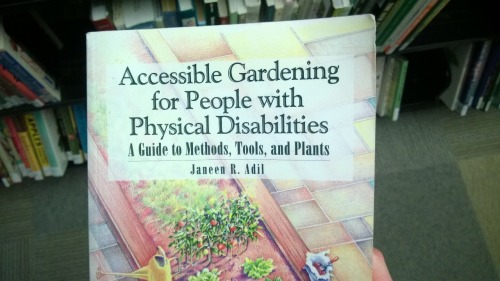
this book is worth more than a dozen restaurants that grow their own microgreens on the roof










I started working on an edible forest garden three years ago, and this is the first year that it’s really started tasting like one.
The best things in life take a little patience.
Books on edible forest gardening
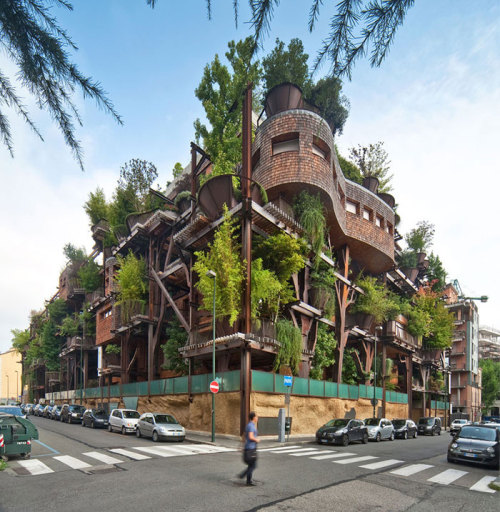
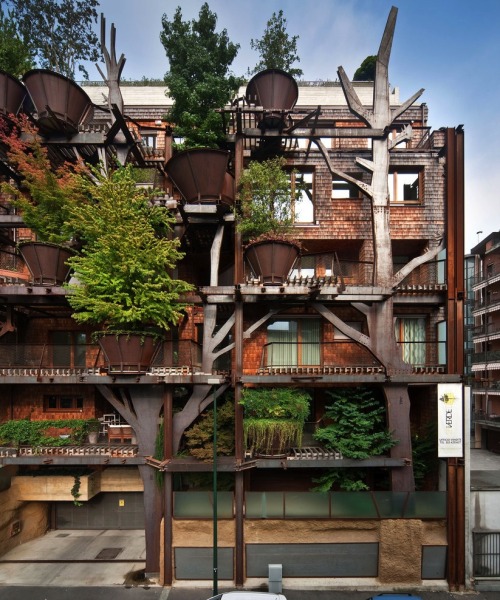
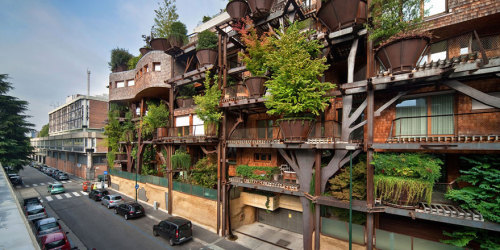
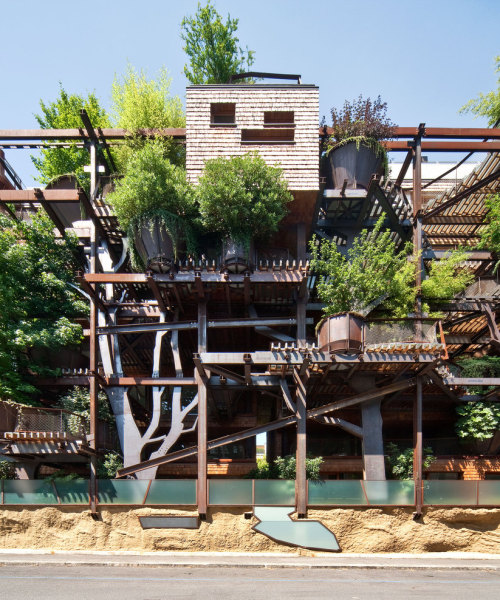
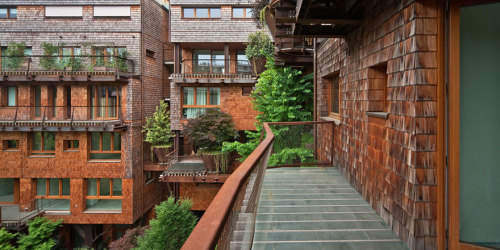
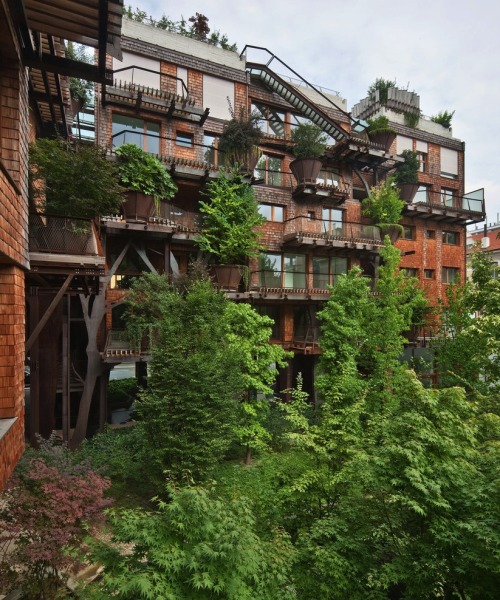
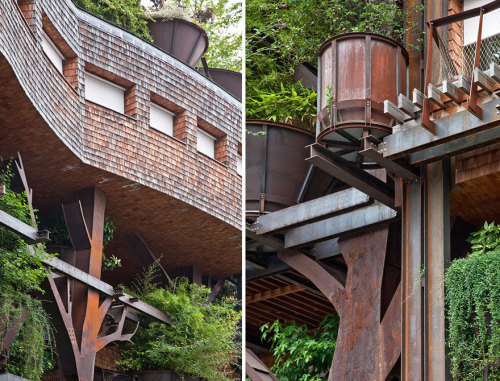
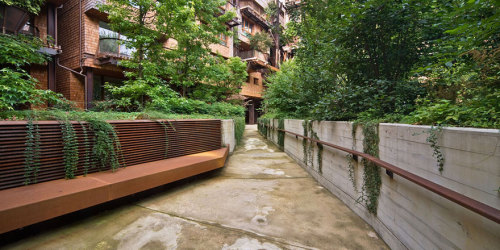
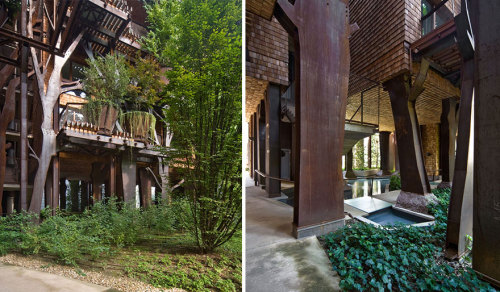
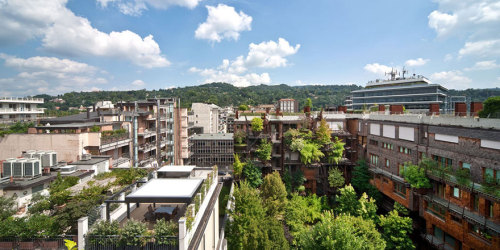
Urban Treehouse Uses 150 Trees To Protect Residents From Noise And Pollution
Luciano Pia, an architect in Italy, has a beautiful vision for how people and nature can live together even in a thoroughly urban landscape. 25 Verde, an apartment complex he designed in Turin, Italy, is a woven 5-story mix of lush trees and steel girders that let urban residents feel like they live in a giant urban tree-house.
Every step in the building’s design was taken with natural integration in mind. The organic and asymmetric shape of its terraces allow potted trees to “sprout” out from the building at random intervals. The ponds in the courtyard provide residents with a refreshing place to relax in the summer, and the 150 deciduous trees, which lose their trees in the winter, allow light to filter in to the building during the darker months. The building helps keep the city’s air cleaner and isolates the residents from the urban sounds and smells surrounding them.The building, which was completed in 2012, is located at Via Chabrera 25 in Turin, Italy – you can even check it out on Google Maps‘ street view!
Via:http://www.boredpanda.com/urban-treehouse-green-architecture-25-verde-luciano-pia-turin-italy/